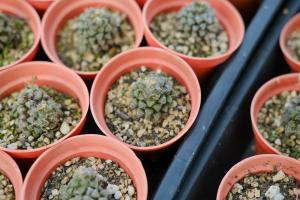Introduction
Plants are vital organisms on this planet, providing us with food, oxygen, and many other resources. However, have you ever wondered how these plants absorb water from the ground? In this article, we will explore the process of how plants absorb water.
The Anatomy of a Plant
To understand how plants absorb water, we must first understand the anatomy of a plant. Plants have specialized organs called roots that anchor the plant into the ground and absorb water and nutrients. The roots have hair-like structures called root hairs, which increase the surface area of the root, allowing for more absorption of water.
The Process of Water Absorption
The process in which plants absorb water and minerals from the soil is called uptake. Uptake begins when water is absorbed into the root hairs through osmosis. Osmosis is the movement of water from a region of high water concentration to an area of low water concentration across a selectively permeable membrane, in this case, the cell membrane of the root hair. The root hairs are selectively permeable, meaning they allow only certain substances to pass through.
The Role of Transpiration
Transpiration is the process by which water is lost from the plant through evaporation. The majority of water absorbed by plants is lost through transpiration. Transpiration also plays a vital role in the movement of water from the roots to other parts of the plant. When water is lost through transpiration, it creates a negative pressure or tension within the plant that moves the water up the stem and into the leaves.
The Importance of Minerals
Water is not the only substance that plants require for survival. Plants also require mineral nutrients such as nitrogen, potassium, and phosphorus to grow and develop. These minerals are absorbed by the plant through the roots and transported throughout the plant via the xylem vessels. The xylem vessels are a network of hollow tubes that transport water and minerals from the roots to the rest of the plant.
The Role of Photosynthesis
Photosynthesis is the process by which plants convert light energy into chemical energy in the form of glucose. The process of photosynthesis occurs in the chloroplasts, which are found in the leaves of the plant. Water plays a vital role in photosynthesis as it provides the hydrogen molecules needed to create glucose. Without water, photosynthesis cannot occur, and the plant will not be able to grow and develop.
Conclusion
In conclusion, the process of how plants absorb water is a complex and intricate process that is essential to the growth and development of plants. Understanding this process is critical in ensuring that we can cultivate and maintain healthy and thriving plants. So next time you water your plants, remember the intricate process that is fuelling their growth and development!

 how many times do yo...
how many times do yo... how many planted tre...
how many planted tre... how many pine trees ...
how many pine trees ... how many pecan trees...
how many pecan trees... how many plants comp...
how many plants comp... how many plants can ...
how many plants can ... how many plants and ...
how many plants and ... how many pepper plan...
how many pepper plan...






























